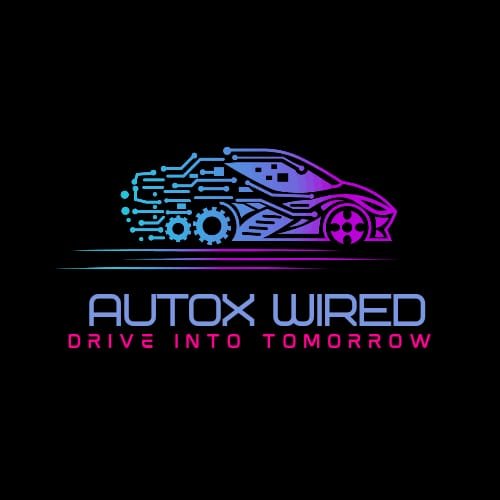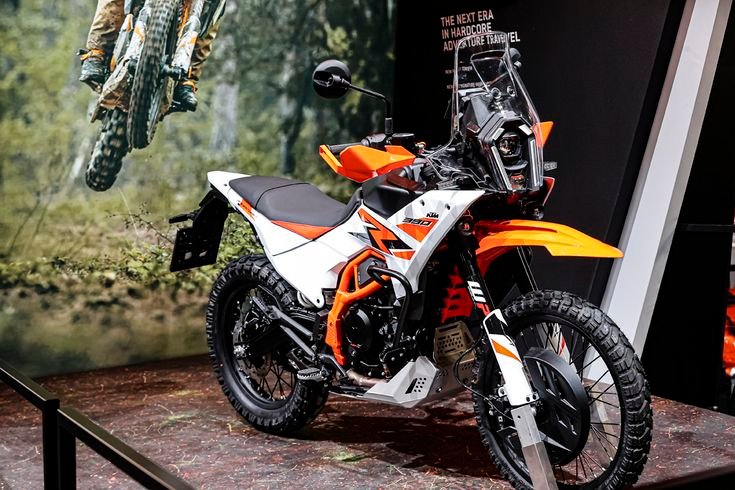
As the automotive industry evolves toward a more connected and autonomous future, Vehicle-to-Everything (V2X) technology has emerged as a crucial innovation to enhance road safety, improve traffic efficiency, and reduce environmental impact. V2X encompasses a suite of communication technologies that enable vehicles to communicate with each other (V2V), infrastructure (V2I), pedestrians (V2P), and the network (V2N). This interconnected ecosystem promises to revolutionize the way we drive and interact with our surroundings. In this article, we will delve into the fundamentals of V2X technology, its various components, benefits, challenges, and its future potential in the automotive landscape.
1. Understanding V2X Technology: An Overview
Vehicle-to-Everything (V2X) is an umbrella term that refers to the exchange of information between a vehicle and any entity that may affect, or be affected by, the vehicle. V2X technology uses wireless communication to provide data exchange between vehicles and their environment, aiming to increase road safety, improve traffic flow, and enhance the overall driving experience.
Key Components of V2X:
- Vehicle-to-Vehicle (V2V): Communication between vehicles to share information such as speed, location, and direction. This enables advanced safety features like collision warnings and adaptive cruise control.
- Vehicle-to-Infrastructure (V2I): Communication between vehicles and road infrastructure, such as traffic lights, road signs, and toll booths. V2I helps optimize traffic flow and reduce congestion by enabling dynamic traffic signal adjustments and providing drivers with real-time information.
- Vehicle-to-Pedestrian (V2P): Communication between vehicles and pedestrians or cyclists equipped with smartphones or wearable devices. V2P technology enhances safety by alerting drivers to the presence of pedestrians and cyclists in their vicinity.
- Vehicle-to-Network (V2N): Communication between vehicles and cloud-based networks, allowing access to internet services, over-the-air updates, and real-time traffic data. V2N enhances navigation, infotainment, and predictive maintenance.
2. How V2X Technology Works
V2X technology relies on a combination of dedicated short-range communication (DSRC) and cellular networks (C-V2X) to enable real-time data exchange between vehicles, infrastructure, and other entities.
Types of V2X Communication:
- Dedicated Short-Range Communications (DSRC): DSRC is a Wi-Fi-based technology specifically designed for short-range communication between vehicles and infrastructure. It operates in the 5.9 GHz frequency band and provides low-latency communication, making it ideal for safety-critical applications like collision avoidance and emergency braking.
- Cellular Vehicle-to-Everything (C-V2X): C-V2X leverages existing cellular networks (4G LTE and 5G) to provide communication over longer distances and support a wider range of applications. C-V2X offers two modes: direct communication (device-to-device) for low-latency safety messages and network-based communication (device-to-network) for cloud services and infotainment.
Data Exchange Process:
- Data Collection: Vehicles equipped with V2X technology collect data from various sensors, including GPS, cameras, radar, and LiDAR. This data includes information about the vehicle’s speed, location, direction, and surroundings.
- Data Transmission: The collected data is transmitted wirelessly to other vehicles, infrastructure, and network entities using DSRC or C-V2X communication protocols.
- Data Processing: The received data is processed in real time to identify potential hazards, optimize traffic flow, or provide drivers with relevant information.
- Action Implementation: Based on the processed data, the vehicle’s onboard systems or the driver can take appropriate actions, such as braking, accelerating, or changing lanes, to avoid collisions or navigate efficiently.
3. Benefits of V2X Technology
V2X technology offers a wide range of benefits that extend beyond individual vehicles to improve overall road safety, traffic management, and environmental sustainability.
1. Enhanced Road Safety:
- Collision Avoidance: V2V communication allows vehicles to share real-time information about their speed, position, and direction, enabling advanced safety features like forward collision warnings, blind spot detection, and emergency braking. This reduces the risk of accidents caused by human error, which accounts for 90% of road accidents today.
- Pedestrian Protection: V2P communication alerts drivers to the presence of pedestrians or cyclists in their path, even in low-visibility conditions. This can significantly reduce pedestrian-related accidents in urban areas.
2. Improved Traffic Efficiency:
- Traffic Signal Optimization: V2I communication enables traffic lights to dynamically adjust their timing based on real-time traffic conditions, reducing congestion and minimizing waiting times at intersections.
- Adaptive Cruise Control: V2V communication allows vehicles to maintain safe distances from each other and adjust their speeds based on traffic flow, reducing traffic jams and fuel consumption.
3. Environmental Benefits:
- Reduced Emissions: By optimizing traffic flow and reducing stop-and-go driving, V2X technology can lower fuel consumption and reduce greenhouse gas emissions. The technology also supports the integration of electric vehicles (EVs) by providing real-time information on charging stations and traffic conditions.
- Energy Efficiency: V2X-enabled vehicles can access data on road conditions, traffic, and weather to optimize routes and driving behavior, leading to more energy-efficient journeys.
4. Enhanced Driver Experience:
- Real-Time Information: V2N communication provides drivers with real-time updates on traffic, road conditions, and weather, helping them make informed decisions and avoid delays.
- Over-the-Air Updates: Automakers can use V2X technology to deliver over-the-air software updates, ensuring that vehicles remain up-to-date with the latest safety features and functionalities.
4. Challenges and Barriers to V2X Adoption
While V2X technology offers numerous benefits, several challenges must be addressed to achieve widespread adoption.
1. Regulatory and Standardization Issues:
- Lack of Harmonized Standards: Different regions and countries have varying standards for V2X communication protocols, such as DSRC and C-V2X. This lack of standardization can hinder interoperability and create confusion for automakers and infrastructure providers.
- Regulatory Approval: Governments need to create clear regulations and guidelines for the deployment of V2X technology, including spectrum allocation, data privacy, and cybersecurity measures.
2. Infrastructure Requirements:
- High Investment Costs: Deploying V2X infrastructure, such as smart traffic lights, roadside units, and connected road signs, requires significant investment. This can be a barrier, particularly in developing countries with limited resources.
- Maintenance and Upgrades: V2X infrastructure requires regular maintenance and upgrades to ensure compatibility with the latest technologies and protocols, adding to the overall cost.
3. Data Privacy and Security Concerns:
- Cybersecurity Risks: V2X technology involves the exchange of vast amounts of data between vehicles, infrastructure, and networks. This data is susceptible to cyberattacks, such as hacking, spoofing, and denial-of-service attacks, which can compromise safety and privacy.
- Data Privacy Issues: The collection and transmission of data raise concerns about user privacy, particularly regarding location tracking and personal information. Automakers and regulators must implement robust data protection measures to address these concerns.
4. Technological Limitations:
- Latency and Reliability: V2X communication, particularly C-V2X, relies on cellular networks, which can be affected by latency and network congestion. Ensuring low-latency and reliable communication is critical for safety-critical applications like collision avoidance.
- Compatibility with Legacy Systems: Integrating V2X technology with existing vehicles and infrastructure can be challenging due to compatibility issues. Retrofitting older vehicles with V2X capabilities may require significant modifications and costs.
5. Current Developments and Use Cases of V2X Technology
Several pilot projects and deployments worldwide are showcasing the potential of V2X technology in real-world scenarios.
1. Smart Cities and Connected Corridors:
- Columbus, Ohio, USA: Columbus has implemented a smart corridor with V2I technology that connects traffic signals and public transportation vehicles. The system dynamically adjusts traffic signal timing based on real-time data, reducing congestion and improving public transit efficiency.
- Amsterdam, Netherlands: Amsterdam is testing V2X technology to improve traffic flow and reduce emissions in urban areas. The city uses V2I communication to provide real-time traffic information to drivers and public transport operators, optimizing routes and reducing delays.
2. Autonomous Vehicles and V2X Integration:
- Waymo (Google): Waymo, Google’s autonomous vehicle division, is integrating V2X technology into its self-driving cars to enhance safety and navigation. V2X enables Waymo vehicles to communicate with traffic lights, other vehicles, and pedestrians, improving their ability to navigate complex urban environments.
- Audi A8: Audi has implemented V2X technology in its A8 model, allowing the vehicle to communicate with traffic lights in select cities. This feature, known as Traffic Light Information (TLI), informs drivers about upcoming signal changes, enabling smoother driving and reducing fuel consumption.
3. Emergency Vehicle Priority Systems:
- Vienna, Austria: Vienna has deployed a V2X-based emergency vehicle priority system that allows ambulances and fire trucks to communicate with traffic lights, requesting green lights to clear their path. This system reduces response times and improves safety for emergency responders and other road users.
6. Future Potential and Developments in V2X Technology
The future of V2X technology is promising, with ongoing research and development aimed at expanding its applications and capabilities.
1. Integration with 5G Networks:
- Ultra-Reliable Low-Latency Communication (URLLC): 5G networks offer ultra-reliable low-latency communication, which is essential for safety-critical V2X applications like collision avoidance and autonomous driving. The integration of 5G with V2X technology will enable faster and more reliable data exchange, enhancing overall performance.
- Massive IoT Connectivity: 5G networks support massive IoT connectivity, allowing millions of connected devices, including vehicles, infrastructure, and wearables, to communicate seamlessly. This will enable the creation of smart cities with integrated V2X ecosystems.
2. Expansion to Non-Urban Areas:
- Rural and Remote Connectivity: While most V2X deployments focus on urban areas, there is potential to expand the technology to rural and remote regions. This can improve road safety in areas with limited infrastructure and reduce the risk of accidents caused by wildlife or poor visibility.
- Freight and Logistics Applications: V2X technology can enhance freight and logistics operations by enabling real-time communication between trucks, warehouses, and logistics centers. This can improve route optimization, reduce delivery times, and enhance supply chain efficiency.
3. Development of Cooperative Automated Driving:
- Platooning: V2X technology can enable vehicle platooning, where multiple vehicles travel closely together in a coordinated manner, reducing aerodynamic drag and improving fuel efficiency. This is particularly beneficial for commercial vehicles, such as trucks and buses.
- Cooperative Maneuvering: V2X technology allows vehicles to share their intended maneuvers, such as lane changes or merging, with other vehicles in their vicinity. This enables cooperative driving, where vehicles work together to optimize traffic flow and reduce the risk of collisions.
7. Conclusion
Vehicle-to-Everything (V2X) technology is set to revolutionize the automotive industry by enabling safer, more efficient, and environmentally friendly driving experiences. With its ability to facilitate real-time communication between vehicles, infrastructure, and other entities, V2X has the potential to significantly reduce accidents, alleviate congestion, and lower emissions. However, the widespread adoption of V2X technology will require overcoming several challenges, including regulatory and standardization issues, infrastructure investment, and data privacy concerns.
As advancements in 5G networks, AI, and IoT continue to unfold, the future of V2X technology looks promising. By 2030, we could see a world where connected vehicles and smart infrastructure work seamlessly together to create safer and more efficient transportation systems, transforming the way we move and interact with our environment.





